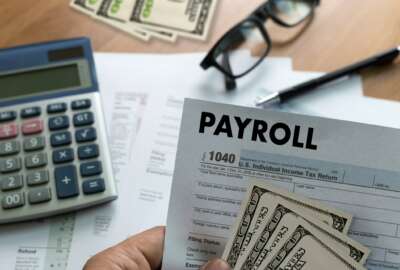

If you don’t like financial surprises you are probably going to hate the catch-up paycheck coming your way. The money you get for shutdown-delayed wages may not...
If you don’t like financial surprises you are probably going to hate the catch-up paycheck coming your way. The money you get for up to four weeks of shutdown delayed wages may not be nearly as much as you expected, and need, to catch up on overdue bills and payments.
You may be short-changed by a lot. It’s yet another example of the stupidity, complexity and cost, to you, of a shutdown.
For many survivors of the shutdown of 2018-19, the only thing worse than going weeks without a paycheck may be the better-late-than-never check you get for delayed wages. Depending on how it is handled the payment you get could bear little resemblance to you what you had expected for four weeks without pay.
Friday marked the second time in one month that employees — 420,000 who worked without pay and 380,000 furloughed without pay — didn’t get a paycheck. The good news is that the two groups will eventually get the back pay they missed, at least based on what’s happened in previous shutdowns.
But the not-so-good news is that the actual lump sum payment they get (four-plus weeks of pay for some people) could be less, a lot less, than expected. Why? Can you say deductions — from a much-bigger-than-normal payment? Which is what one fed who got a partial lump sum payment at the start of the shutdown found out, according to their coworker Mike M. who sent us this message:
“I know a federal employee who works in an agency that was shutdown. The individual got its pay sheet that showed the agency found some funds to partially pay the employee. Rough gross pay was about $1,000. Sounds good on the surface but [they] ended [up] getting a net pay of about $27. Twenty-seven dollars for take home pay [doesn’t] help much after missing the earlier paycheck.
“You might ask why the delta between gross and net. Yep you got it! Full state and [federal] taxes were taken out. Social security payment, medical insurance and full [Thrift Savings Plan] allotment when they get a full pay period paycheck.
“As you know the moderate amount of TSP payment can’t be easily tapped. You think someone would have adjusted or temporarily stopped the full automatic TSP payment so these employees could get some additional much needed cash in their hands. Thoughts?”
So how does a $1,000 payment shrink to $27? We put the question to super-CPA Bob Leins of the National Institute of Transition Planning. At first he was skeptical but after lots of research he said some of the back pay checks may be dramatically reduced. If you want to know what your pay stub could look like, check his findings from the Office of Personnel Management’s website on income tax withholding and furlough back pay.
He offered these tips for deciphering the document:
He said the information does not give guidance as to what exactly will be withheld from the currently yet-to-be-seen furlough checks.
“The most profound guidance is on Page. No. 4, paragraph No. 6: The ‘Recomputation of Deductions,'” he said. “This might be exactly what resulted in the $27 net paycheck example you mentioned before.”
By Amelia Brust
Basin Head Beach on Prince Edward Island, Canada, has a unique feature: The sand’s high concentration of silica and quartz causes it to “squeak,” or sing, when you walk on it.
Source: Basin Head PEI
Copyright © 2025 Federal News Network. All rights reserved. This website is not intended for users located within the European Economic Area.
Mike Causey is senior correspondent for Federal News Network and writes his daily Federal Report column on federal employees’ pay, benefits and retirement.
Follow @mcauseyWFED


